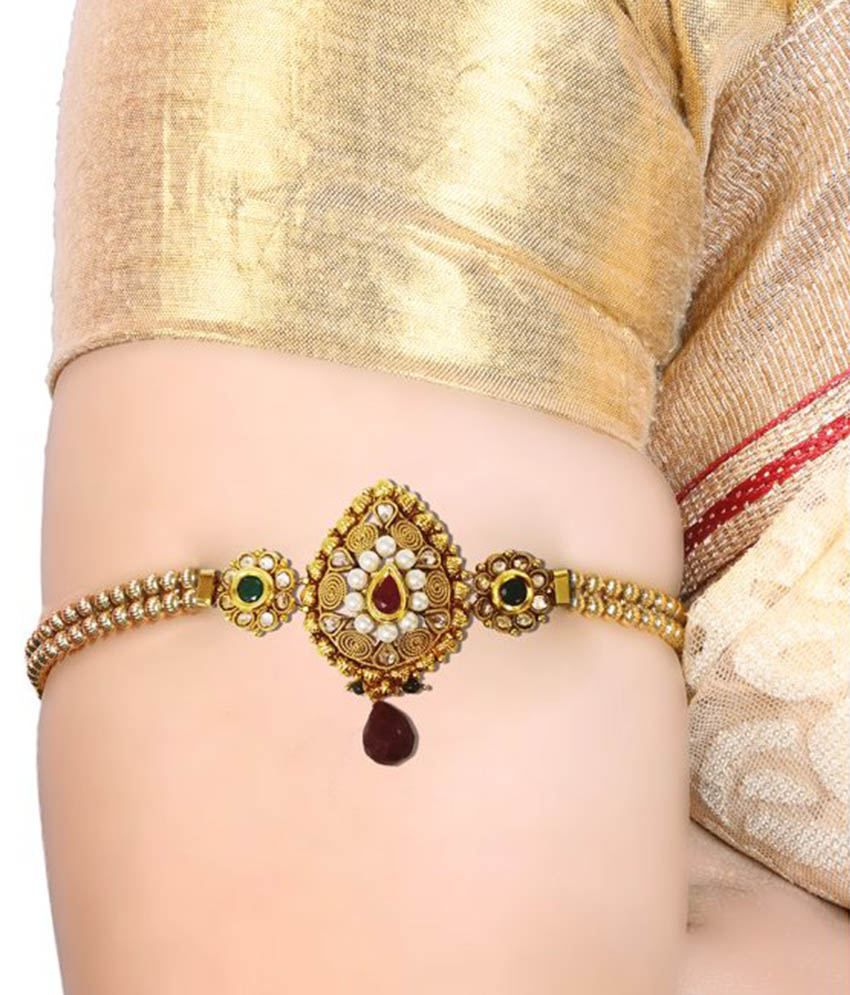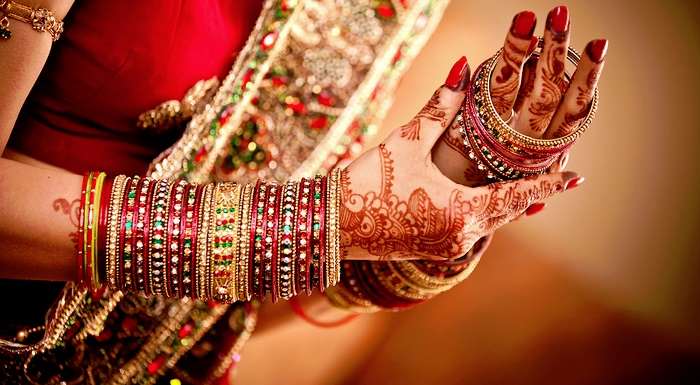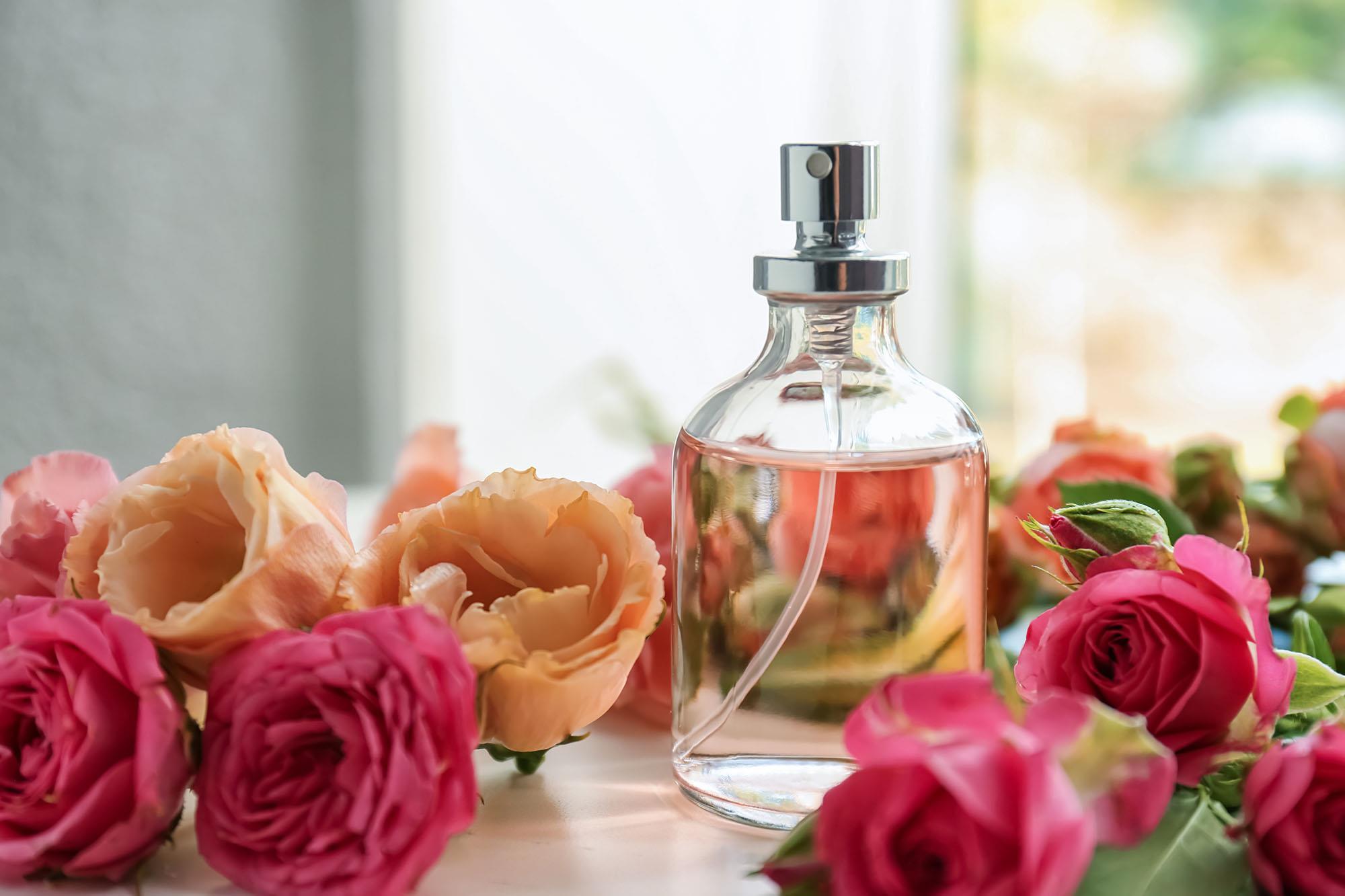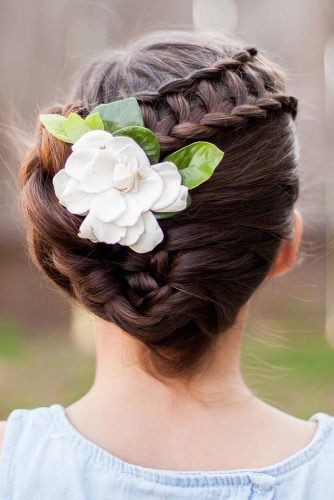Introduction:
In the realm of bridal adornment, the enchanting ritual known as Solah Shringar takes center stage, weaving a tapestry of elegance and tradition that defines the Indian bride’s transformative journey. This ceremonial embellishment, meaning ‘Sixteen Adornments,’ intricately weaves together a symphony of colors, jewels, and intricate patterns, enhancing every facet of the bride’s persona. Let’s delve into the profound details of each element that collectively constitutes the resplendent Solah Shringar, encapsulating the essence of timeless beauty and cultural significance.
Bindi:
The bindi, a colored dot at the forehead’s center, serves as a visual ode to auspiciousness. For weddings, the red bindi is adorned with additional dots and vine motifs, creating a symbol of prosperity and cultural richness.


Sindoor or Vermilion:
Applied on the hair’s parting, sindoor’s red hue symbolizes marital bliss. Its initial application by the husband is a sacred ritual, distinguishing married women and ensuring the husband’s well-being.
Maang Tika:
The maang tika, a forehead ornament connected to the hair with a chain, holds a significant place as the first jewelry donned by the bride, adding a touch of regality with gold or silver embellishments.


Kajal or Anjana:
Dark, mysterious allure defines the application of kajal, a black dye made from soot, framing both upper and lower eyelash lines and enhancing the bride’s captivating gaze.


Nath or Nose Ring:
Married Hindu women don a nose ring through the left nostril, a symbol of matrimony often crafted in gold or silver, adorned with precious stones and linked to the hair behind the ear.

Karn Phool or Ear Ornaments:
Earrings, an indispensable part of bridal attire, range from jhumkas to elaborate ear cuffs, complementing the necklace and featuring popular designs like diamond, kundan, and meenakari.


Haar or Necklace:
The necklace, a centerpiece in bridal ensembles, showcases layers of intricate designs, from simple gold chains to elaborate necklaces with kundan, filigree, meenakari, and jadau embellishments.


Mehendi:
The art of mehendi involves applying a paste of indigenous herbs in elaborate designs on the bride’s hands and feet, symbolizing luck, prosperity, and fertility, with the groom’s initials often integrated.


Bajubandh or Armband:
Adorning the upper arms, the bajubandh, typically made of gold and precious stones, is a distinctive ornament more common among Rajasthani and South Indian brides.


Bangles:
Classic bangles, made of gold, silver, glass, or lac, symbolize prosperity and family well-being. Diverse styles such as Shankha Pola, Loha, and Kalire hold unique cultural significance.


Aarsi or Haathful:
These hand ornaments, featuring rings with chains connecting to a central motif and then to a bracelet, add a touch of elegance, often crafted in gold and adorned with Kundan or precious stones.


Kamarbandh or Waist Accessories:
Worn around the waist, kamarbandh emphasizes the bride’s slender waist, serving as a simple or elaborate ornament enhancing her overall figure.


Payals or Anklets:
Anklets, made of silver and adorned with chiming beads, grace the bride’s feet, symbolizing prosperity while avoiding gold on the feet for auspiciousness.


Bichhua or Toe Ring:
Customary for married women, toe rings, often made of silver, enhance fertility and carry cultural significance, sometimes gifted by mothers-in-law.


Fragrance:
Immersed in fragrances like Itar, the bride not only exudes a delightful scent but also finds calm amidst the wedding rituals, adding another layer to her overall allure.


Keshapasharachana or Hair Accessory:
White flowers like jasmine and bel, along with other floral adornments, become integral components of the bride’s hair, completing her Solah Shringar makeover and radiating a timeless charm.


In the intricate details of Solah Shringar, the Indian bride becomes a living canvas, each element narrating a story of tradition, symbolism, and unparalleled beauty.






